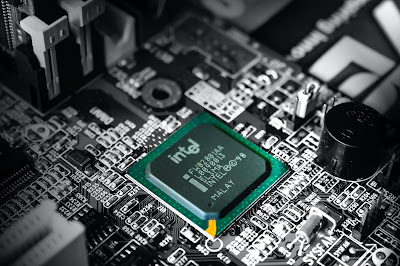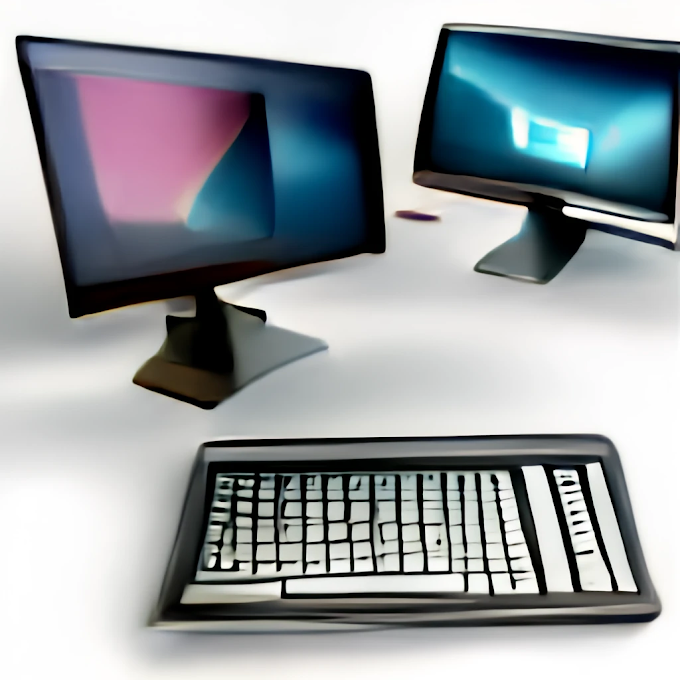EVOLUTION OF COMPUTERS :
Necessity is the mother of invention.The saying holds true for computers too. Researchers invented computers because of man search for fast and accurate calculating devices.
Ancient people used stones for counting or made scratches on a wall or tied knots in a rope to records information. But all these were manual computing techniques. Let us take a look at the development of the computer through various stages.
1. Abacus :
Around 3000 years before the birth of Jesus Christ the Mesopotamian quite unknowingly laid the foundation of the computer era. They discovered the earliest form of a bead and wire counting machine, which subsequently came to be known as abacus .
2.Napier's and 'Logs' and 'Bones' :
John Napier (1550-1617) developed the idea of Logarithm . He used 'logs' to transform multiplications problem to addition problem. Napier's logs later become the basis for a well known invention the computing machine known as 'slide rule' (invented in 1662). Napier also devised set of numeric rods known as Napier Bones.
3. Pascal's Adding Machine :
Blaise pascal, a French mathematician, inverted a machine in 1642 made up of gears which was used for adding numbers quickly.This machine was named as Adding Machine (also known as pascaline).
4.Babbage's Difference Engine :
Charles Babbage a professor of mathematics developed a machine called Difference Engine in the year 1822.
5. Mark -I :
Prof. Howard Aiken (1900-1973) in USA constructed in 1943 an electromagnetically computer named Mark-I which could multiply two 10-digit number in 5 seconds -a record at that time Mark-I was the first machine which could perform accordance to pre programmed instructed automatically without any manual interference.
This is how computer Evolved.
THE GENERATIONS OF COMPUTER :
The term computer generation is often used in relation to the hardware of computer.
1. The First Generation of Computers (1949-55) :
The first generations of computers used thermionic valves (vacuum tubes ) and machine languages was used for instruction.The first generation computers used the concept of 'stored program'.
1. ENIAC : This was the first electronic computer developed in 1946 by a team lead by prof. Eckert and Mauchly at thge university of pennsylvania in U.S.A. This computer called Electronic Numerical Integrator And Calculator used high speed vacuum tube switching devices.It has a very small memory and it was used for calculating the trajectories of the missiles.
2. EDVAC : The binary arithmetic was used in the construction of computer called Electronic Discrete Variable Automatic Computer (EDVAC).
3. EDSAC : The EDSAC short for Electronic Delay Storage Automatic Computer was build by prof. M.V Wilkes at cabridge University in 1949.
4.UNIVAC : One such a computer was UNIVAC - I build by univac division of Remington Rand and delivered in 1951. This computer also used vacuum tubes.
- Used vacuum tubes
- Big and clumsy computers
- Electricity consumption is high.
- programming in machine language.
2. The Second Generation of Computers (1956-65) :
A big revolution in electronics took place with the invention of transistor by Bardeen, Brattain and shokley in 1946.Transistors were highly reliable compared to tubes.
Some key features of second generations computers are :
- Transistor replaced vacuum tube
- computers became smaller
- Generated less heat
- more reliable
- faster
- Magnetic tapes and disk used
- first operating system developed
- programming language is machine language as well as assembly language.
3. The Third Generation of Computers (1966-1975) :
The third generation computers replaced transistors with integrated circuits known popularity as chips.
The Integrated circuit or IC was inverted by jack kilby at Texas instruments in 1958.
Some key features of third generations computers are :
- integrated circuits develops
- power consumption lower
- high level languages appeared
4. The Fourth Generation of Computers (1976-1989) :
Key features of fourth generations computers are :
- ICs with SSI and MSI technology.
- microprocessor, semiconductor memory:larger capacity hard disk developed
- portable computers developed
- C C++ programming languages developed
- e.g IBM PC, TRS-80, AppleII etc.
Key features of fifth generations computers are :
- Parallel processing
- superconductors
- the internet
- world wide web
- JAVA python, etc programming languages developed.
- e.g IBM notebooks, PARAM etc.
These are the generations of the computers.















0 Comments